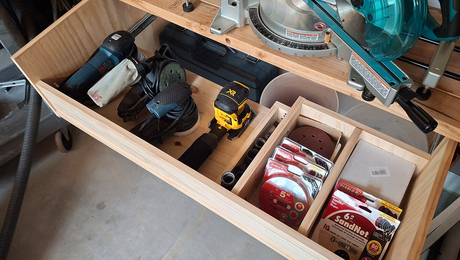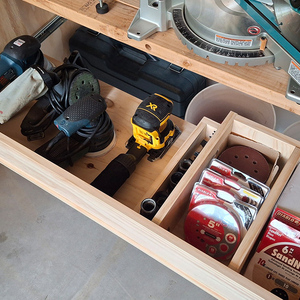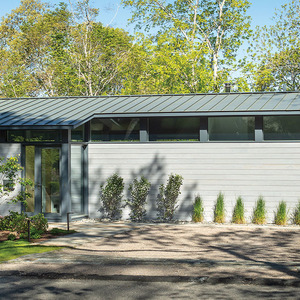Hi:
I live in a converted (into condos) mill building in the Northeast. I’m freezing. We have heat pumps, part of the unit (the A/C?) lives on the building’s roof, and the rest of the mechanicals are on top of my bathroom. 3 ton unit, 1300 sq feet, 14 ft high ceilings. I want to run duct work and I can’t think of a reason why I can’t do it myself. It would be exposed, like you see in many commercial/retail spaces. Are there any complications I should watch for, and does anyone know of any resources that can guide me through.
Many thanks!



















Replies
The duct work will restrict airflow and may imbalance the heat pump. Heat pumps are a bit more sensitive to this than standard combustion furnaces.
Hard to say how much of a factor it might be, though.
A heat pump is nothing more than an air conditioner that works in reverse.
I would suspect that the design conditions require some type of backup (emergency) heat, either from electric strips or gas/oil.
Technically, as long as the temperature is above absolute zero, heat can be extracted from the outdoors and brought inside. Practically, heat pumps on r22 start to become inefficient around 20* F. Compounding your problem is 3 tons of heat pump is nowhere near enough to heat 1300 square feet with 14ft ceilings in snow country unless the space is impeccably insulated with top of the line windows and very limited exterior walls and roof exposure (three tons of heat pump will deliver *at best* slightly less than 36,000 btu's of heating at outdoor temperatures above 20*F).
Three tons of cooling is probaly also marginal for the space.
The volume of your space is the killer.
For reference, your space is 18,200 cubic feet. Using a rule of thumb (not a load calculation) and assuming average construction for my location, you need 127,400 btu to heat that entire volume of space. Assuming good construction, that number changes to 109,200 btu. Given 9' ceilings and average construction, the number drops to 81,900 btu. All of these numbers are well over (more than 4x) the capacity of the equipment you described in your original post.
Do you know the heat load or cooling load of the space? You can go to http://www.hvac-calc.com, pay a small fee for a single use license and find out yourself. The program will also do duct design- maybe not on the limited use license, though.
Did the original HVAC contractor or builder know what they were doing? Is the building still under any type of builders warranty?
Adding ductwork will not fix your problem.
A web search for "duct design" or "acca" will point you in the right direction. What you want is "Manual D, Residential Duct Design".
That book will tell you how to do it right. Anything less is up to you :)
Edited 2/25/2007 9:48 am ET by danski0224
OTOH, it is possible that the unit you have was intended to be finished, with ductwork added, and this has simply not been done. At the very least, hot air should be delivered at floor level, not from the ceiling, and it's generally best that it be delivered along the outside walls vs the center. (In fact, if you can appropriately heat outside walls and other "outside" surfaces, you don't need any "interior" heat at all.)
It certainly would be reasonable to investigate the addition of ductwork. Whether it's feasible to do and whether you can DIY are separate questions.
What have other occupants done?
first... i'd look at your breaker panel.... if you have a 30amp breaker for "a/c" and another 30-40 amp breaker for "heat" then it's a good guess you have heat strips in your air handler (the part above your bathroom).
if you do..... and you should have the heat strips... you might want to make sure they are in fact heating up when called for... you should have an access panel on your air handler that should face out (toward your access point to the unit) prob held on with 4 screws maybe a 12" x 16" metal panel... behind this panel you will see the heat strips... much like the coils that glow red in a small space heater... you might have several... they are usually in sections of... 5kw, 7.5kw or 10kw and should be so marked... look to see if they are glow'n when called for... pretty common for the wires to burn off at the connection points...
if you got this far.... a few ideas... you can add strips to most units or increase the size (wattage) they are pretty cheap... you do have to figure load, wire size, and breaker size... what i have seen is where the original specs called for 10kw was followed... it was at 220v or 240v and being an old mill building you might only have 208v which derates it... by up to 40%...
I unlike what others have posted i think 3t of a/c in your area should be ok... you didn't say you were ever hot...
as for exposed ductwork... yes it is that simple it's in conditioned space so it doesn't need to be insulated in open spaces you are just directing air into a general area... most mistakes are made in undersizing the return air... in your case I'd guess they only have one return duct with a filter vent... make sure it's large enough (think of you try'n to breath thru a cocktail straw)...
good luck...
p
I unlike what others have posted i think 3t of a/c in your area should be ok... you didn't say you were ever hot...
For conversation purposes, think of the 1300 square foot space with 14' ceilings as a "plain jane" two story home essentially at 2600 square feet.
Using a rule of thumb, say 700 square foot per ton, the ac unit is too small. Note that "rule of thumb" and "load calculation" are not the same :).... You probably know that, though.
This does not factor in roof heat gain loads if that applies (we do not know that), and a lack of cooling was not addressed. No ductwork to direct the air down doesn't help.
just my thinking....he's in the northeast.... not a huge ac load there... he's in a converted mill building... pretty good chance he's not an "end unit" and most conversions require hvac engineering... so i'm guess'n it was sized right... he didn't say anything about the cooling so again i'm assume'n it's a non issue... and...with 14ft ceilings... would not that help the cooling?... we also don't know if he's ground floor, mid, or top floor... since he's cold... I'm think'n he's on a lower floor... but we don't know.... since the question was about be'n cold... I see no way they in that climate, they would have depended on the heat pump for 100% of the heat load... so i think it's a heat strip issue...
just gave him some places to look...
p
" and...with 14ft ceilings... would not that help the cooling?."Depends on where the vents are.If they are located in the lower 1/2 then use.If you have returns at the top then you are cooling a lot of hot air that you aren't feeling.Also NE can be CT or Maine..
.
A-holes. Hey every group has to have one. And I have been elected to be the one. I should make that my tagline.
However, you're also not factoring in that this is (presumably) a multiunit structure. There generally is little heat gain/loss through common walls/floors/ceilings.
So convenient a thing it is to be a reasonable Creature, since it enables one to find or make a Reason for everything one has a mind to do. --Benjamin Franklin
That's correct. My input on the subject is worth the price paid :)
That's why I provided the link to a reasonably inexpensive and accurate program that I am happy with.
Once the actual heat loss and gains have been figured, then the path to a solution is more clear- provided there aren't other issues with any backup heat if it exists.
No prior history with the home and HVAC has been given. Obviously, if it worked last winter, then there is a problem somewhere.